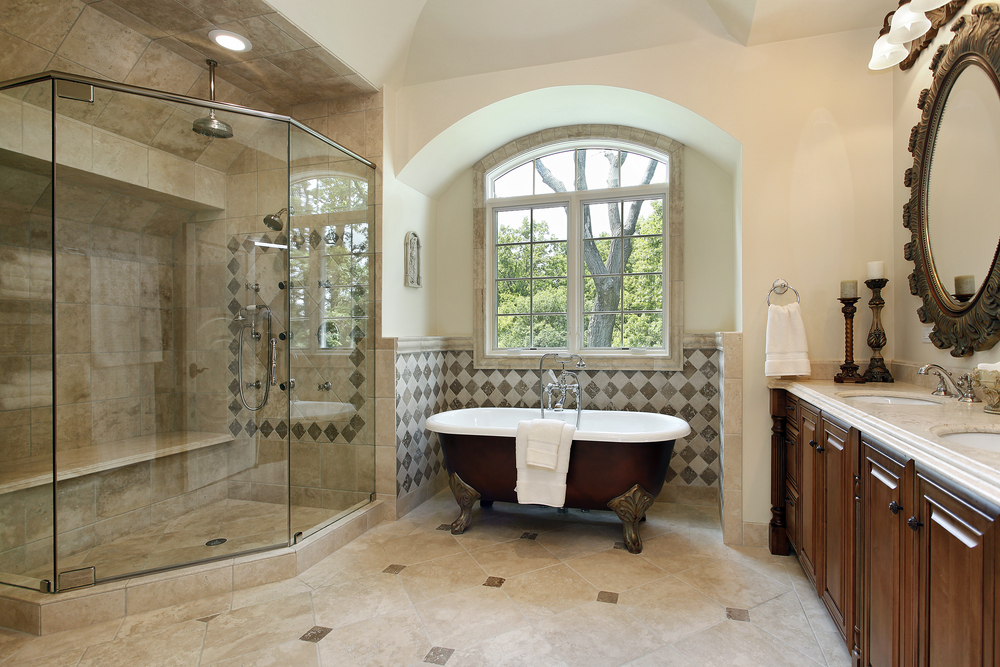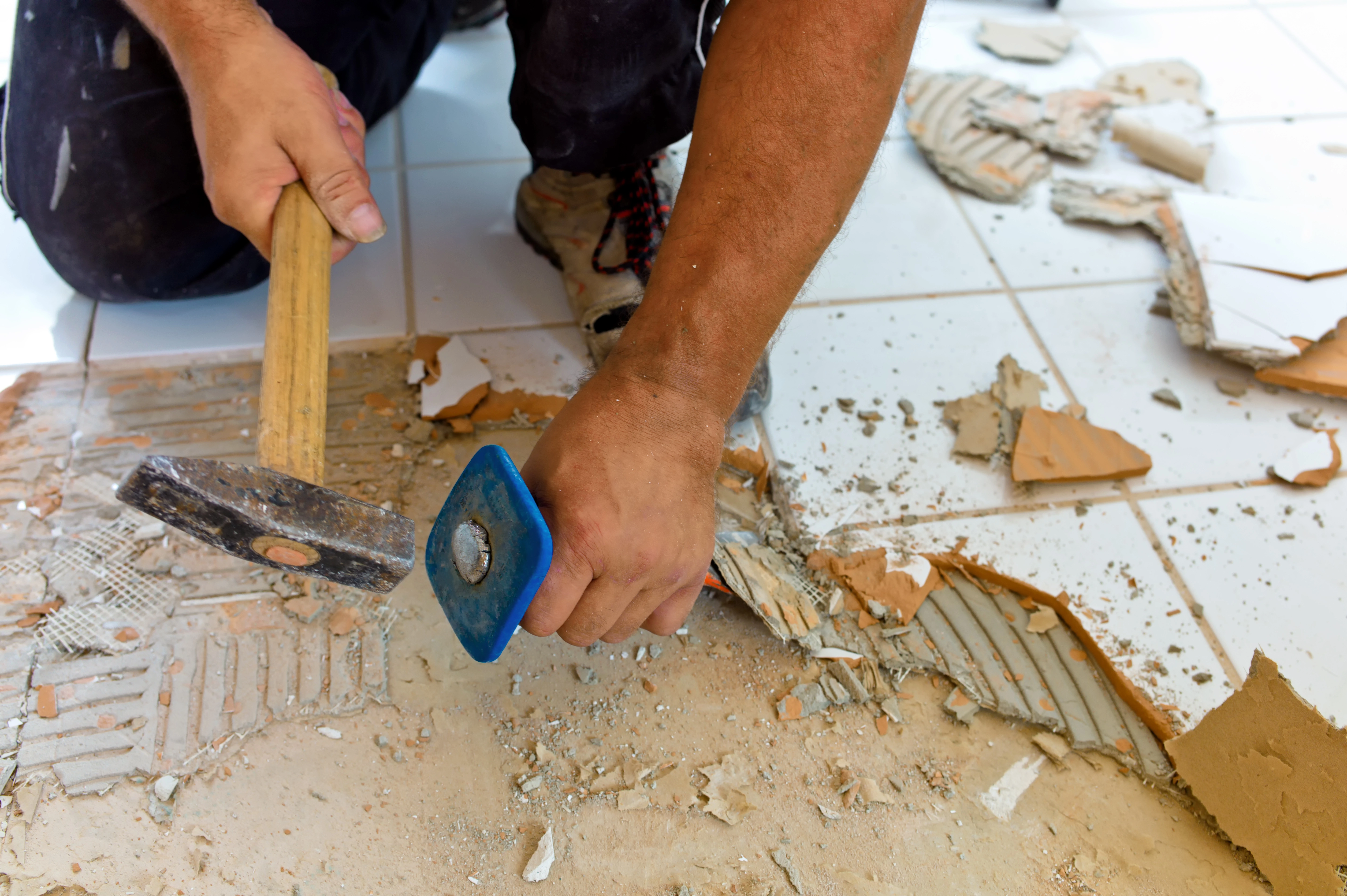
Time is a Construct: Remodeling a Bathroom
Did you know that the history of bathrooms dates back further than you might think — let alone imagine. It is complex, mystifying, and sometimes convoluted. The first written record of them goes as far back as 3000 B.C. Way before the legendary Roman Bathhouses. The joints were used not with hygiene in mind but for their religious value. To purify the soul and body. To let our ancestors get in touch with the spirit world. And since day one we’ve been remodeling the heck out of them. Why? Because bathrooms as a whole have evolved. From those long-forgotten spiritual havens to the necessary evil of hygiene, all the way to the luxury fixated on them in modern times. To the opulence some of them have become. Bathroom renovation is a popular home improvement project that holds the promise of transforming a functional space into a haven of style and comfort. Into a place where you, and you alone, can be kind. It even has its own little throne. Yet, the journey from vision to reality involves navigating a timeline that can be influenced by numerous factors. Understanding the timeline for a bathroom remodel is essential for effective planning, managing expectations, and ensuring a smooth process. In this guide, we'll delve into the various stages of a bathroom remodel and explore the key factors that influence the duration of the project. We’ll give you the inside scoop on what to expect, and more importantly rain on your parade — because no matter how easy YouTube’s many DIY refurbishes might make it seem, there’s more than meets the eye when it comes to bathroom remodeling. The devil is in the details, and in those video’s cases, in very fancy editing.
Factors Influencing Bathroom Remodeling Timelines
According to statistics, 6 out of 10 Americans plan to remodel or upgrade their homes this year — and their go-to room, the one they deem demands the most attention, you guessed it! The bathroom. And there are multiple reasons for that. It’s not only an aesthetic decision, but a sound financial one. According to CreditKarma a bathroom refurbish - however small - pumps up your property’s value. You can get a lot of bang, for your buck. For resale value to renting value. A well-designed modern, even eco-friendly, the bathroom is a cash cow in the making.
But, that possible goldmine, takes time. Let’s look at what factors make or break your remodeling timeline.
Scope and Complexity of the Project
The size and complexity of your remodeling project play a pivotal role in determining its duration. A simple cosmetic update, such as replacing fixtures and repainting walls, will likely take less time than a comprehensive renovation. The latter might involve convoluted structural changes, plumbing and electrical work, and the installation of new fixtures. Not only that, but the more complex the project the more likely you’ll need a permit — which will take time.
Size of the Bathroom and Layout Changes
The physical dimensions of the bathroom are directly linked to the timeline. Larger bathrooms may take longer to renovate due to the increased area that needs attention. If your project includes layout changes like moving plumbing lines or modifying the room's arrangement, these alterations can extend the timeline as well. Anything that means breaking open walls, taking out their inners or messing with the original blueprints of your place will add time to your project.
Material Selection and Availability
The choice of materials, fixtures, and finishes significantly impacts the timeline. It all comes down to what you plan on using. Whether you decide to import kitsch or personalized designs or if Ikea or Home Depot is your go-to shop for your bathroom needs. If you opt for custom-made or specialty items, the time needed for fabrication and delivery must be factored in. On the other hand, readily available materials can expedite the process.
Contractor’s Schedule and Workforce
Contractors and constructors, regardless of whether you know them or not have busy schedules. They have the calendar booked tight for months. Scheduling and workforce availability are critical factors. If you hire a reputable contractor who is in high demand, their calendar will affect when they can start and complete your project. The size of the contractor's team can influence the speed of construction. The bigger the team the faster you’ll get your powder room up and running.
Plumbing and Electrical Work
Projects involving plumbing and electrical changes inherently demand more time due to their technical nature. Not only that but plumbing and electricity are the type of things that need extra supervision, and someone to triple-check them. Also, in many cases, these type of projects also require the A-OK, your local permit office and your ever noisy Homeowners Association. Coordinating with plumbers and electricians adds layers of complexity to the timeline, as these professionals need to ensure that the changes meet safety standards.
Unexpected Issues and Contingencies
Bathroom renovations rarely unfold without a hitch. Every project, no matter how well-design it is, is bound to trip up sooner or later. No matter who you hire. Why? There are a lot of moving parts in place. There are vendors. There are permit officials. There are personal issues in place when it comes to your crew. Unforeseen issues, like discovering hidden structural problems or encountering challenges during demolition, can extend the timeline. Building in a buffer for contingencies is wise to avoid unnecessary stress.
Read also: Commercial Bathroom Remodel Ideas in 2024
The Role of Permits in Bathroom Remodeling
Before embarking on your bathroom renovation journey, it's crucial to consider the role of permits. These are some of your biggest - and dullest - hurdles. And they are there for a reason. Permits are there to protect your investment, your well-being and that of your neighbor. All those zoning factors you have to take into account are there for your protection — they take into account things about the area you might be ignorant of. Form historical significance to the fact that the soil or water table has certain minerals that interact badly with certain materials. Depending on the scope of your project, local regulations, and the nature of the changes you're making, permits may be required. Obtaining the necessary permits ensures that your remodel is conducted in compliance with building codes and safety standards. Failure to secure the proper permits can lead to delays, fines, and potential legal complications.
Not obtaining your permits could even mean that you’ll have to turn back the clock and redo your bathroom — returning it to its initial design.
Permit requirements vary by location and the extent of the project. Some common aspects that may require permits include:
- Structural Changes: Altering load-bearing walls, changing the room's layout, or expanding the bathroom's square footage often necessitates permits.
- Plumbing and Electrical Work: Projects involving changes to plumbing and electrical systems generally require permits to ensure safety and compliance.
- Environmental Impact: If your remodel incorporates eco-friendly features or sustainability initiatives, additional permits might be needed to adhere to environmental regulations.
Typical Stages of Bathroom Remodeling
Let’s take a look at the stages of a typical, normal, bathroom remodeling job.
Planning and Design Phase
The planning and design phase involves creating a vision for your renovated bathroom. Kevin McCloud - designer, author, and TV Presenter of Grand Design - hold this stage in high regard. Why? “Because pen and paper are cheap… Compared to the cost of having to redo something simply because you planned it wrong.” This stage includes choosing materials, fixtures, and finishes. Collaborating with a design professional during this stage can help refine your ideas and ensure a cohesive look.
Demolition and Preparation

Demolition is where the old makes way for the new. This stage involves removing existing fixtures, flooring, and sometimes walls. Demolition is crucial to avoid damaging the structural integrity of the space. Getting the wrecking ball up and running and who runs it, is critical when it comes to all your careful planning. Not all bathroom remodeling projects require demolition. In most cases, if it's a cosmetic job, all you’ll really need is a handyman — not a crew savvy in the ways of the sledgehammer.
Plumbing and Electrical Work
Water and electricity — those, plus fire, were the trifecta our parents were always warning us about. And there was a reason for their many, many, many warnings. This stage involves making any necessary changes to the plumbing and electrical systems. It's important to ensure that new plumbing lines and electrical connections meet building codes and safety standards. During this stage it is also crucial to take into account outputs — understand that some zones and regions give tax-breaks to buildings that do their best to limit their energy expenditure and waste.
Structural Changes - If Applicable
The second you pull out the initial blueprint and start crossing out walls, is the very second you’ll have to start adding time to your project — and by time we mean days and weeks. If your project involves altering the layout or making structural changes, such as removing walls or relocating doorways, this stage can significantly impact the timeline. Structural changes often require additional time for engineering and permitting.
Installation of Fixtures and Finishes
Installing new fixtures, such as sinks, toilets, and showers, is a crucial step. In most cases, depending on what you bought and from whom you bought it, this stage might add a day or even a month to your planning. The more personal, the more niche in its design, the harder it will be to adapt and transport to the location. Additionally, installing cabinets, countertops, and other finishes adds the final touches that bring your design to life.
Flooring and Tiling
Laying down new flooring and tiling contributes to both the aesthetics and functionality of your renovated bathroom. This stage requires precision and attention to detail.
Painting and Final Touches
Applying fresh coats of paint and attending to the finer details, such as adding trim and hardware, marks the final stages of your bathroom remodel. This is where your whole vision truly comes together.
Read also: How Much Does a Jacuzzi Bath Remodel Cost?
Bathroom Remodeling: Case Studies on Timelines
Let’s look at 3 case studies on bathroom renovation — challenges faced, as well as how they were overcome.
Case Study 1: A Swift Bathroom Transformation
Project Overview: A young couple inherits one of their parent’s homes. They want to breathe new life into that outdated bathroom. Their focus? Modern aesthetics and functionality. The scope included replacing fixtures, installing new tiles, and upgrading lighting.
Challenges Faced: Limited space posed a challenge, requiring careful planning to maximize utility without compromising on design. Additionally, unexpected plumbing issues were encountered during the demolition phase due to the age of the structure. It’s also important tdoco highlight that they were working with a limited budget as such they had to rethink each buy.
Overcoming Challenges: The homeowners and their contractor worked closely to optimize the layout – they couldn’t move walls or take them down. Why? For multiple reasons – including budgetary, and the fact that they didn’t want to get permits. By repurposing some existing fixtures and making creative use of storage solutions, they were able to make the most of the available space. The plumbing issues were resolved in a flash — the contractor brought in an experienced plumber, allowing the project to stay on schedule.
Timeline: 2 weeks
Case Study 2: A Grand Bathroom Transformation
Project Overview: A family with a spacious but outdated bathroom envisioned a luxurious retreat. They came into some money and now want to splurge on their bathroom. Their remodel encompassed a complete redesign of the layout — integrating a double vanity, a freestanding tub, and a spacious walk-in shower.
Challenges Faced: Structural changes and the incorporation of multiple fixtures led to unexpected complications during the plumbing and electrical work. The customization of fixtures required coordination with specialized suppliers. Also, due to key facts in their blueprints and what their designer proposed they also have to ask for permits and wait until those are given a look and approved before they can begin. They also have to get in contact with the neighborhood's HOA due to the fact that demolition requires a dumpster to be placed in front of their home during the renovations.
Overcoming Challenges: The contractor collaborated with a engineer to address the unforeseen challenges posed by the structural changes. Additional inspections were required, which led to minor delays but ensured the safety of the remodel. The procurement of customized fixtures was managed through a proactive approach to supplier communication and coordination.
Timeline: 6 weeks
Case Study 3: A Meticulous Bathroom Transformation
Project Overview: Homeowners have embarked on a comprehensive remodel of their master bathroom – they want all the bells and whistles and money is not an issue. They are aiming for a balance of elegance and functionality. Minimalist designs but everything of the best quality in the market. The scope includes a layout redesign, intricate tiling work, heated floors, an expansion of the space into their recently moved to college kid, and high-end fixtures.
Challenges Faced: The intricacy of the tiling design demands meticulous attention to detail, resulting in longer-than-anticipated tiling and finishing stages. Coordination among various subcontractors was essential to avoid bottlenecks. A jacuzzi was delivered and there were issues with the plumping and the electrical output of the household.
Overcoming Challenges: The homeowners, contractor, and tiling experts collaborated closely to ensure that the intricate tiling work met their high standards. Regular check-ins and adjustments to the timeline helped manage expectations. Permits and inspections became a regular occurrence. A new electrical system, with higher output had to be installed. Coordination with vendors - some of which were international - was key. Open communication among all parties enabled efficient scheduling of subcontractors, reducing potential delays.
Timeline: 10 weeks
Read also: What is the most expensive part of a bathroom remodel?
Getting expert help
Bathroom remodeling is a transformative journey that requires careful consideration of timeframes and a comprehensive understanding of the factors at play. From scope and materials to unforeseen challenges, each aspect influences the timeline. By planning effectively, working with experienced professionals, setting realistic expectations, and ensuring proper permits are obtained, you can navigate the timeline of your bathroom remodel with confidence. In the end, a well-executed renovation rewards you with a space that combines functionality, aesthetics, and the satisfaction of a project completed with care
About the author


